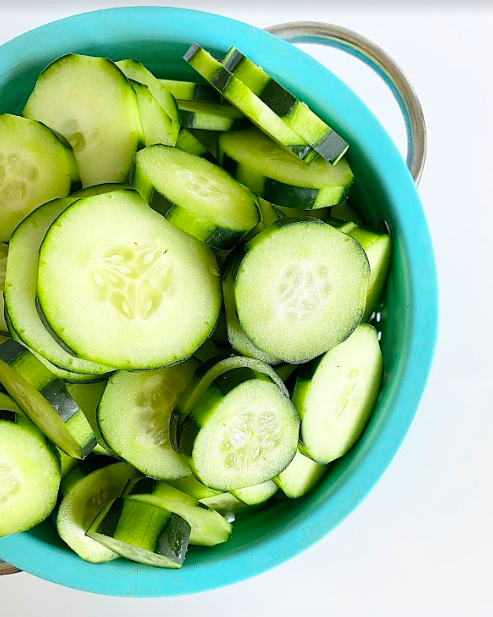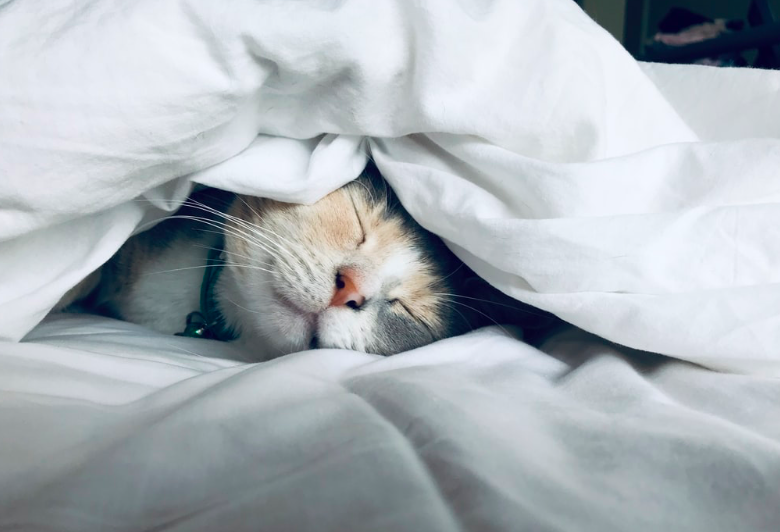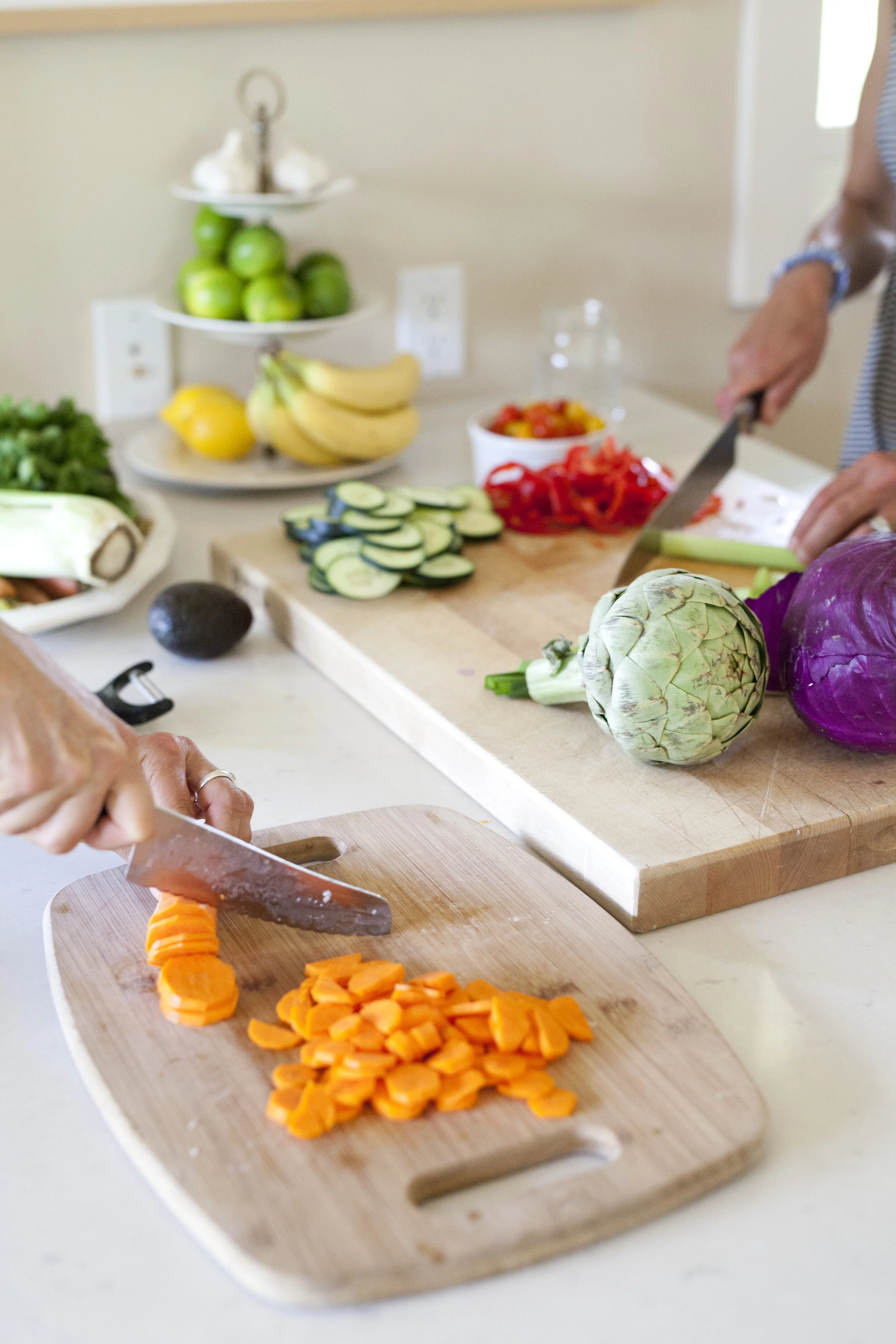Calm Home, Calm Mind – Top Tips For Living with Less Stress
.
Over the next few weeks we will be diving in deep as we strive (serenely) towards less stress in the home. Clutter can make us feel stressed, anxious and depressed and research has proven that levels of the stress hormone cortisol are higher in women whose home environment was cluttered. The New York Times published a post on the Unbearable Heaviness of Clutter and tidying is becoming all the rage - from Marie Kondo, to the Home Edit - we can find inspiration everywhere.
Working from home, schooling from home, cooking at home… all of these activities that could be so joyful can sometimes feel quite the opposite. We will tick through these - one by one, and hopefully inspire some zen and FUN!
Having stressors in our lives is something that’s become practically unavoidable. Unless you live a storybook-like life in a remote mountain meadow where it’s always sunny and worries don’t exist, you probably have triggers in your life that cause you stress. But creating a calm home is a perfect first step to encourage a calm body. Some stressors can be eliminated altogether, but more likely, you’re going to have to be disciplined about finding ways to care for yourself and your loved ones to help ease environmental stressors. One of the best ways we can do that is to be super intentional about our home environments.
Stress causes all kinds of negatives in our lives that can impact act ourselves and our relationships. We are not our best selves when our brains are expending so much energy in survival mode, which means that we’re not showing up as we’d like for our partners, friends, and families. Being mindful about creating calming and peaceful space helps give our brains that much-needed room to unpack worries, set them aside, and rest.
How to ZEN OUT Our Homes
Pay attention to every room – This doesn’t mean that you have to tackle every room in your home at once. Pick the rooms you spend the most time in to start. You’ll feel the impact right away in those spaces, and it will motivate you to keep going. Once you’ve created peaceful spaces where you spend most of your time, keep going to areas like your laundry room/space, pantry, storage rooms, etc. If you create serene and organized environments in the fewer glam places of your home, doing chores will be less of a, well, chore.
Add natural light – This is a huge one that can change the tone of your space immediately. Don’t worry, we’re not suggesting you start knocking out walls! Adding mirrors to your room can capture and reflect natural light and create a more open and airy feeling. Try to hang mirrors on walls opposite to windows to reflect the outside light directly – it’s like a sneaky second window. In corners, think about getting a tall mirror that stands on the floor and set it diagonally in the corner. This takes away shadowy corners and reflects light through your space.
Stimulate your senses – Have you ever walked into a room and just thought, “Ohhh, I like this, it’s nice in here.”? Chances are, that space incorporated several different sensory elements that create that feeling. Music, scents, textures, and colors are all ways that our environment influences us. Subtle scents from candles or diffusers can trigger our bodies to relax, as can music. Likewise, adding pops of color and different textures to a room creates a feeling of interest and depth. Think area rugs and throw pillows in accenting colors and varying textures.
Decorating Ideas – Where to start when you’re decorating can feel a bit daunting at times. The principles of Feng Shui and Vastu Shastra can help give you some direction and a place to start. They both involve the ideas of a balanced space that’s uncluttered and incorporates natural elements.
Create a wellness space
A wellness space is a spot that you designate is just for you to unwind and relax. This is unique from having, say, a relaxing living room. A living room is a multi-use space and having it be a welcoming and serene environment is good, whereas your wellness space is singular in its intention, which is to be a place where you can unwind.
Where you put your wellness space might depend on what type of area you have available. A spare room is always a great option but not doable for everyone. If you have an open concept floor plan, think about adjusting the layout to create this space. Wherever it is, it should be somewhere you don’t use to work or watch Netflix.
What you do in this space and how it is decorated are entirely dependent on you. Set an intention for what you’ll use this room or area for. If you like stretching or yoga, your space might include a basket for cork balls, blocks, a yoga strap, and a blanket. Think of an oversized comfy chair, fuzzy reading socks, and a good lamp if you want a place to read.
Whatever the intention of your wellness space, carefully choose items that reflect its purpose and things that make you feel calm. If painting isn’t an option, look for a fabric wall hanging in soothing colors that you can use to create the right vibes. Hang prints and artwork that you like, and incorporate calming lights and scents.
8 Relaxing Activities to Cultivate at Home
Listen to a Podcast – There was a time where podcasts were a niche thing that catered to particular interests. No more, friends. There is a podcast for everyone! You don’t have to sit down and listen like you’re in the 40s gathered around a radio, either. Throw one on your home speaker system and listen as you clean the house, fold laundry, or clean out the junk drawer. Whether you’re in it for education or purely to be entertained, there’s a podcast that you’ll love.
Journal – Journaling is an incredibly personalizable activity. Don’t think you need to begin “Dear Diary” to be journalling. Anything goes – doodles, words you like, quotes you heard, lists of things you’re grateful for, or places you want to go. You might think it’s all in your head anyway, so why bother putting it down on paper? There’s magic in it. Give it a shot.
Read A Book – Whether your genre of choice is wild fantasy or historical biographies, reading is essential for your brain. It takes you out of your day-to-day and lets your mind escape. If you’re not a reader, crack a book and give it five pages. You might be surprised!
Meditate – The benefits of meditation are well-documented and thorough. If clearing your mind to a blank nothingness sounds like torture, know that not all meditation requires you to do that. Many are based on a thought or mantra, something to focus on to tether your thoughts. There is a wide variety of meditation videos online, from beginner to advanced and of nearly any length.
Painting – Maybe you used to paint and haven’t been able to find the time, or maybe you’ve never picked up a paintbrush. Regardless of skill or aptitude, painting is a lovely way to let your mind unwind and wander. Pull out your old painting supplies or hit the dollar store for a canvas, paint, and brushes for under $10, put on some music you love, and find your inner Van Gogh (just keep both of your ears).
Yoga – Similar to meditating, the benefits of yoga are extolled far and wide. Even better, online platforms are more plentiful than ever. If you’re just starting, all you need is a yoga mat and a quiet space. Practices vary in length, so you don’t have to commit to a more extended session. If you’re a come-and-go yogi or a regular looking to mix it up, try searching for a 30-day challenge. Lots of yoga platforms will offer a free challenge as an incentive to sign up, so you can give it a test run while you’re getting back into your groove.
Gardening – Gardening is one of those things that can quickly become a healthy obsession. It connects you with nature and teaches you new things (just wait until one of your new babies starts looking a little yellow and see how much you learn about nitrogen and potassium mixtures). Also, like meditation, gardening gives your mind something to focus on in the foreground while the back of your mind quietly sifts through other thoughts.
Puzzles – If you’ve ever met a dedicated puzzler, you know. Puzzles are a great way to practice mindfulness while also pulling in other sensory experiences. The artwork you can find on puzzles is endless, and not only that, you can have a puzzle printed with your favorite artwork! That way, when you’re done, you can put it in a frame and have a unique piece to hang. Puzzles are also tactile, meaning that part of the experience is the feeling of the pieces. They are also an exciting group activity – start doing a puzzle quietly and see how long it takes for anyone who walks by to join in.


































































